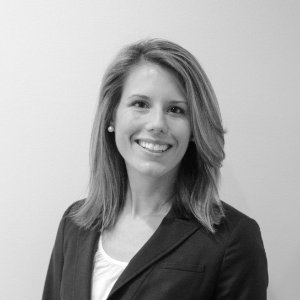New Year’s Resolutions
Category : PROspective
A new decade. A new year. A new you.
This year, countless people will set their resolutions for the year.1,2 Motivated and fueled with the energy a new year brings, they will rely on their willpower and determination to actualize these goals. Yet, the majority of these best intentions will have flickered by February.3
So how can this year be different for you?
The refrain of countless self-help professionals has been that it takes “21 days to make a change.” By this, they mean that by following a given practice for 21 days, say to set the alarm every morning for a two-mile morning run, that by day 22 you will automatically wake up in the morning ready to run. This prescription for a new you, however, has been widely misinterpreted.4
In the 1950s, the surgeon Maxwell Maltz observed it would take a minimum of 21 days for his patients to mentally accept their new appendage, that is, to form and accept a new mental image of themselves. In his book, Psycho-Cybernetics, he delved deeper into his own period of adjustment to new behaviors and concluded that it took a minimum of 21 days before he would adapt to change. However, the “minimum” that Dr. Maltz recorded was lost as pundits hung on to the “21-day change” mantra.
Now, just how long does it actually take for a new habit to form?
It turns out, it takes an average of 66 days5 for new habits to become automatic.
“We are what we repeatedly do. Excellence, then, is not an act, but a habit.”
– Will Durant
You are your habits. Habits are cognitive associations that are formed when we repeat an action in a given scenario and are then rewarded for having done so.6 According to researchers at Duke, habits account for about 40% of our behaviors on any given day.7
Knowing this, how do we make this year be the one that allows us to make habits not daily decisions?
1) See yourself the way you want to be:
Maltz also observed that change begins within. The most powerful tool you can employ is your own imagination. Picture yourself the way you want to be and change your mental picture. See yourself as the researcher, community activist, fitness buff, you aspire to be. The internal picture you carry of yourself is a powerful tool. Use it. Your current behavior is a reflection of your current identity. Change your identity and begin the change process in yourself.
2) Form Associations:
Add the new behavior to a habit you have already established. Brushing your teeth is a no brainer… so add 10 pushups, a 30 second plank, or drink a glass of water, each time you brush to create association, and link the behaviors. Determine a specific time and space for your desired behavior to live in your world.8,9
3) Use Physics:
Reduce the amount of friction to achieve the habit and set yourself up for success. Make the action as effortless as possible – sleep in your running gear, or have it laid out by your bed, surround yourself with healthy foods, block out time to write every morning before the day gets away from you. Eliminate as much of the decision making as possible, to make the behavior automatic.
Add friction to dismantle the behavior. According to Wendy Wood, “if you add thought to the behavior, you make people attend to it, and more likely stop”. Place the bowl of fruit on your desk and put the bag of chips on the top shelf of the pantry. Find ways to add friction to the behaviors you no longer want to engage in.
4) Rebound:
You are going to miss a day, skip a run, not follow-through – the key here is to get back on track as quickly as possible. Do not fall for an all or nothing mindset. Put your scientific training to work and treat your “failures” as data points; opportunities to learn what works and how to change your course to achieve your goals.
5) Be patient:
Remember the tortoise and hare fable? This is a key step in the process. “Slow and steady wins the race.” Remain steadfast in your resolve and pacing. Change is difficult. Some behaviors will take longer than others to become habits, but if you are persistent (and are kind with yourself) – you can manifest your inner vision of yourself.10
So, set your intent. Decide on the person you want to be, and the characteristics you aspire to embody.
Happy New Year!
1. https://www.sciencedirect.com/science/article/pii/S0899328988800166?via%3Dihub
2. https://health.usnews.com/health-news/blogs/eat-run/articles/2015-12-29/why-80-percent-of-new-years-resolutions-fail
3. https://www.businessinsider.com/new-years-resolutions-courses-2016-12
4. https://www.forbes.com/sites/jasonselk/2013/04/15/habit-formation-the-21-day-myth/#e37c81ddebc4
5. https://onlinelibrary.wiley.com/doi/abs/10.1002/ejsp.674
6. https://www.ncbi.nlm.nih.gov/pubmed/26361052/
7. Neal, T. D., Wood, W., Quinn M. J. (2006). Habits- A Repeat Performance. Association for Psychological Science, 15, 198-202
8. Milne, S., Orbell, S., Paschal Sheeran, P., (2002). Combining Motivational and Volitional Interventions to Promote Exercise Participation: Protection Motivation Theory and Implementation Intentions, British Journal of Health Psychology, 7 163–184.
9. Gollwitzer, P., Sheeran, P., (2006). Implementation Intentions and Goal Achievement: A Meta‐Analysis of Effects and Processes, Advances in Experimental Social Psychology ,38, 69–119
10. Duckworth, A. L., Peterson, C., Matthews, M. D., & Kelly, D. R. (2007). Grit: Perseverance and passion for long-term goals. Journal of Personality and Social Psychology, 92, 1087-1101.



 However, when I think of Atlanta – and I thought this even before attending Rollins – one person always comes to mind: President Jimmy Carter. I admire a lot about this man. His authenticity. His desire and the energy he devotes to creating a better world (I mean just look at this most
However, when I think of Atlanta – and I thought this even before attending Rollins – one person always comes to mind: President Jimmy Carter. I admire a lot about this man. His authenticity. His desire and the energy he devotes to creating a better world (I mean just look at this most
Recent Comments